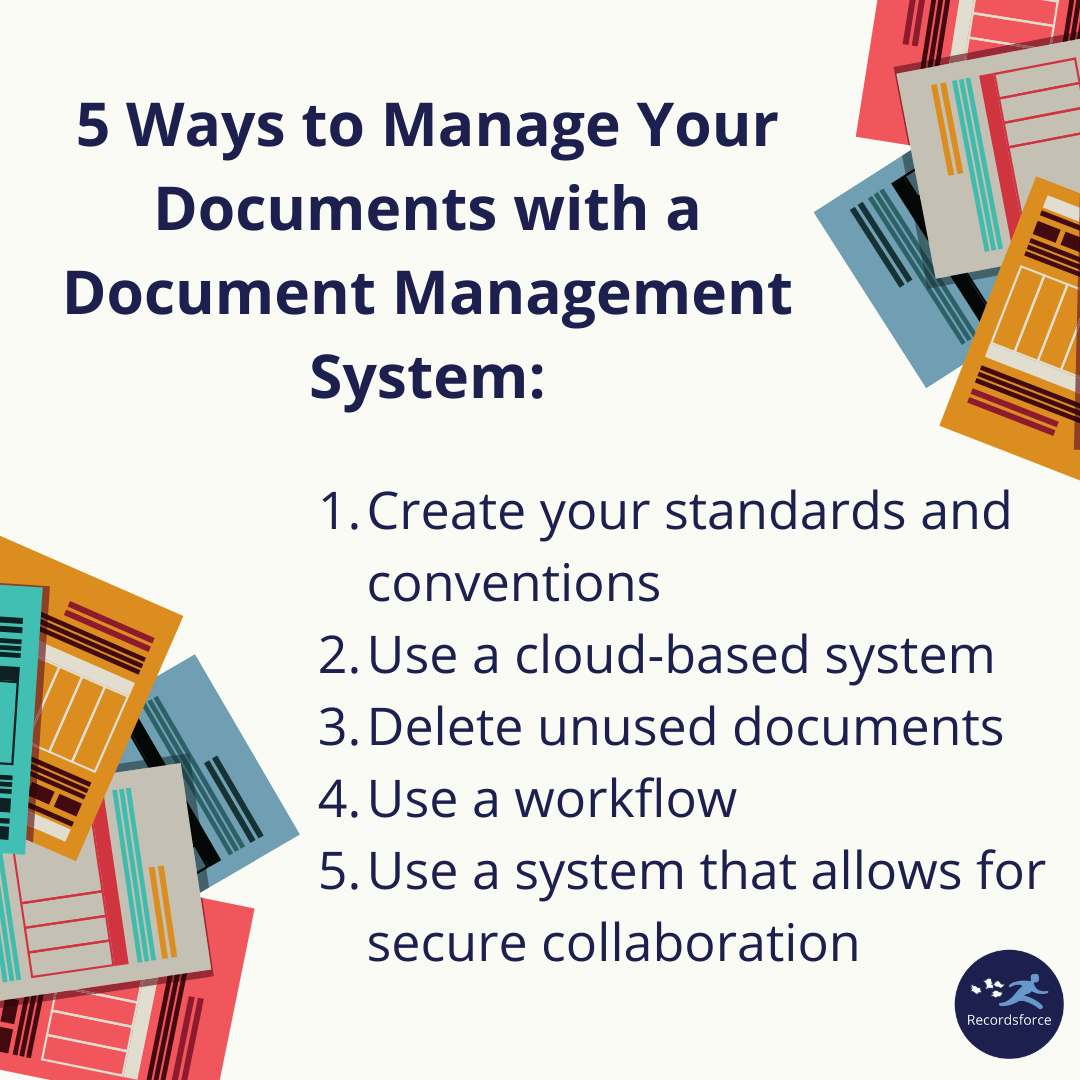Every day businesses create and manage large amounts of documents, from human resource documentation to contracts, invoices and more. Not only do we create and manage these documents, we also have to spend time searching for the documents we need, and a lot of time at that. Even if you are already paperless, we still spend time looking for documents on our drives, inboxes, and work chats.
According to the IDC’s Information Worker Survey, nearly 70% of respondents to IDC’s KMWorld Conference search survey indicated that they spend five or more hours per week doing online information searches, with 16% indicating that they spend 12 hours a week or more doing searches. That is at least an hour of productivity per day that could be used elsewhere.
So, what’s the best way to manage your documents? Using a document management system (DMS), also known sometimes as an electronic content management system (ECM). Document management systems are systems or software that can store, manage and track electronic documents and data for you.
Here are five of the best ways to manage your documents using a document management system:

- Create your standards and conventions
First you will want to create the rules and procedures that will need to be followed when sharing, storing, and reviewing your documents. This includes naming conventions of documents so they can be easily searched, as well as what data you need from each type of document. This ensures that everyone who will have access to your important business documents will have clear direction and rules to follow.
- Use a cloud-based system
Using a cloud-based system, like Recordsforce Cloud, has many advantages, one of them being its scalability to fit your organization’s needs. Cloud-based systems also allow you to access your documents using a desktop, laptop, tablet or even a smartphone. This means you can find the documents you need in a matter of seconds, anytime, anywhere.
- Delete unused documents
Defining and exercising proper retention policies for documents is every bit as important as storing and preserving those documents in today’s litigious environment. Make sure the document management system you choose provides a very simple but adaptable system for retention that allows documents and records to be copied off, deleted and purged at specific times in the document lifecycle.
- Use a workflow
Greater efficiency is gained by using workflow to deliver documents to users that need them, when they need them. No more guessing when work needs to get done. Workflows reduce the amount of time it takes to submit, evaluate and approve document processes. They also eliminate the risk of neglect or displacement during desk to desk travel. Let the system help you manage these needs.
- Use a system that allows for secure collaboration
Lastly, find a document management system that is safe and secure. This includes a system that tracks changes and access to information. Not only should revisions be authenticated and logged, but assets should be able to be tracked. Your system should be secure by ensuring only applicable users can see and change specific access. Recordsforce Cloud, for example, can allow for access user-by-user, by teams, and even by the data level.
The perfect document management system for your business can be hard to find. Recordsforce Cloud is a simple cloud-based document management system that allows users to create, store, search, retrieve and manage their documents without the hassle of configuration or installation. Learn more about Recordsforce Cloud by visiting our website at www.recordsforce.com or by scheduling a meeting.

